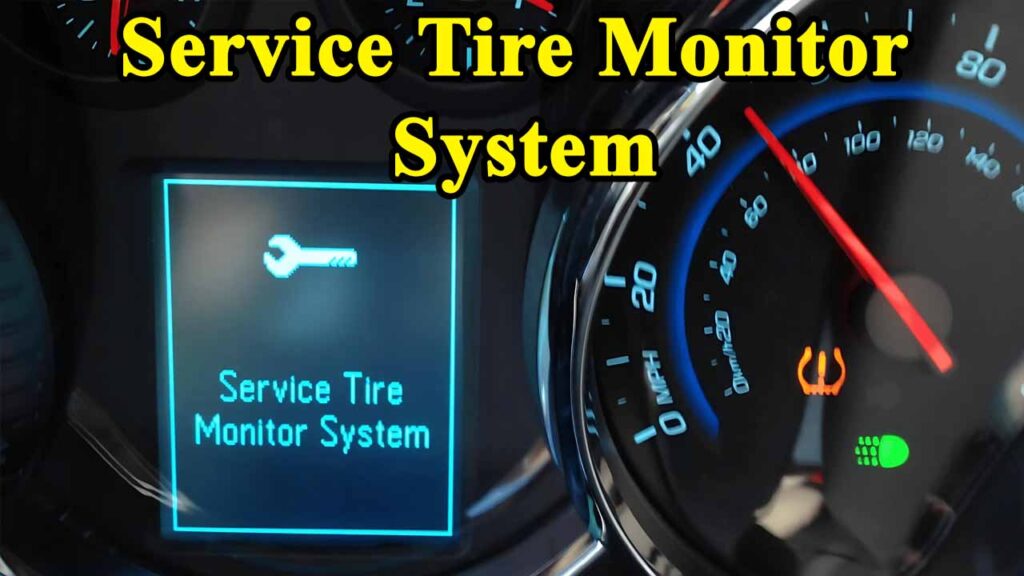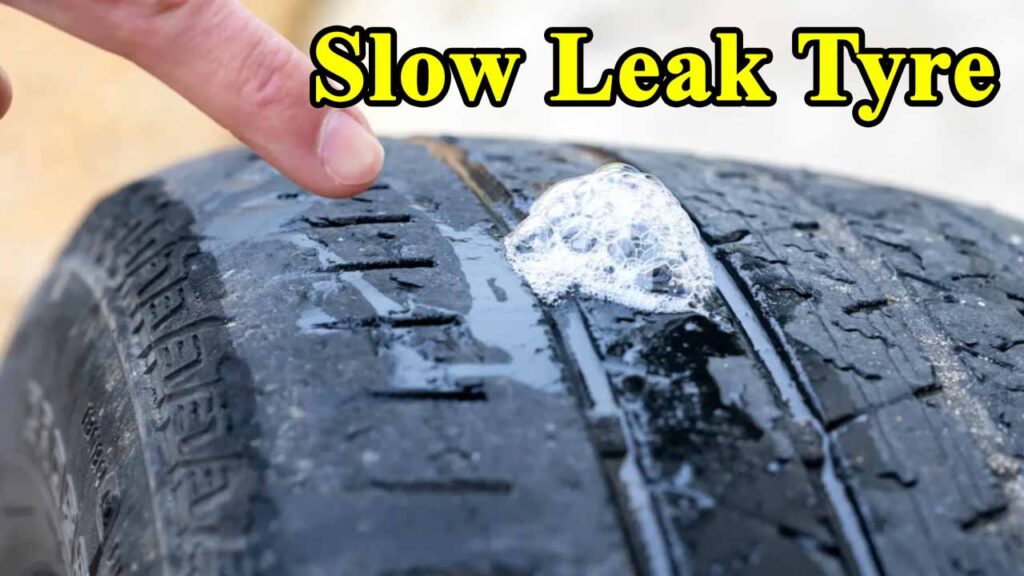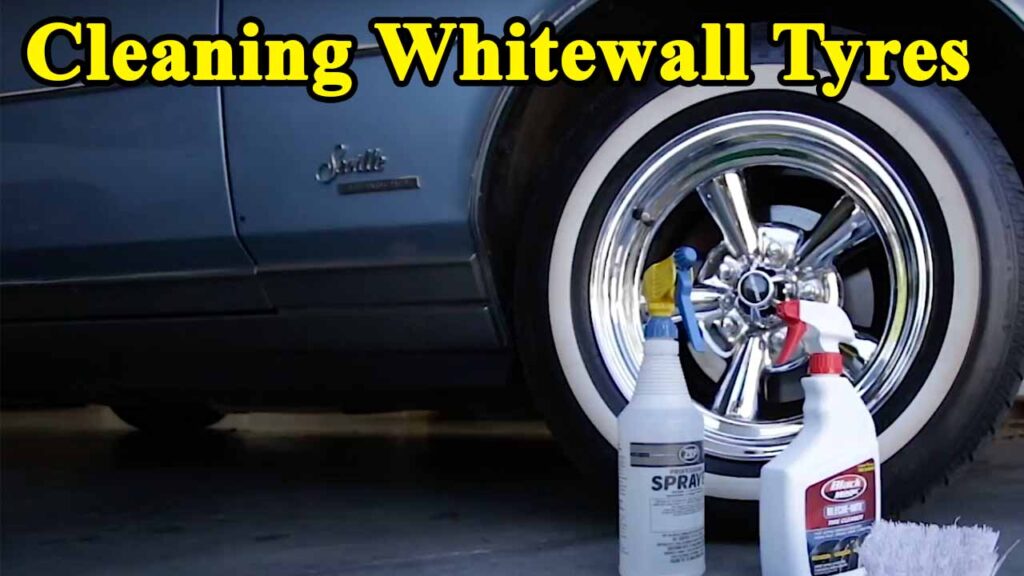As a seasoned automotive enthusiast and someone who’s spent countless hours under the hood and on the road, I can tell you there are few things more critical to your vehicle’s safety and performance than your tires. They are, quite literally, your only point of contact with the road. And while we often take them for granted, there’s a sophisticated guardian working silently to keep them in check: the Service Tire Monitor System (STMS), often more broadly referred to as the Tire Pressure Monitoring System (TPMS).
This isn’t just a fancy dashboard light; it’s a vital piece of modern automotive technology designed to save you from potential headaches, costly repairs, and, most importantly, dangerous situations. In this in-depth guide, we’re going to pull back the curtain on the STMS, exploring what it is, how it works, why it’s indispensable, and what to do when that “Service Tire Monitor System” warning flashes across your dashboard.
What Exactly is a Service Tire Monitor System (STMS)?
At its core, a Service Tire Monitor System is an electronic system that continuously monitors the air pressure inside your vehicle’s pneumatic tires. Its primary function is to alert the driver when one or more tires are significantly underinflated, or in some cases, overinflated. Think of it as your car’s personal tire pressure detective, always on the lookout for anything amiss.
While the term “Service Tire Monitor System” often pops up as a specific warning message on your dashboard, it’s essentially signaling an issue within your broader Tire Pressure Monitoring System (TPMS). The TPMS is the overarching technology, and the “service” message usually indicates a malfunction with the system itself, rather than just low pressure in a tire. This could mean a faulty sensor, a dead sensor battery, or even an issue with the system’s control module.
How Far Can I Drive On A Flat Tyre
How Does This Tire Detective Work Its Magic?
There are generally two types of TPMS, each with its own clever way of keeping tabs on your tires:
-
Direct TPMS: This is the most common and accurate type. Each tire has a small, battery-powered sensor mounted inside, often integrated with the valve stem. These sensors directly measure the tire’s air pressure and temperature. This data is then wirelessly transmitted to a central receiver in your vehicle’s computer. If the pressure in any tire drops below a pre-set threshold (typically 25% below the manufacturer’s recommendation), or if a sensor battery dies, the system illuminates a warning light on your dashboard – and often, in newer vehicles, will tell you exactly which tire is the culprit.
My personal experience with direct TPMS has been overwhelmingly positive. I remember driving my old sedan down the I-5 freeway near Seattle, and suddenly, the TPMS light flashed on. It quickly identified the front-right tire. I pulled over, checked, and sure enough, a nail had found its way in. Without that immediate alert, I might have driven for miles, potentially damaging the tire beyond repair or worse, having a blowout at highway speeds. It felt like my car was looking out for me.
-
Indirect TPMS: This system doesn’t use individual sensors in each tire. Instead, it works in conjunction with your vehicle’s Antilock Braking System (ABS) wheel speed sensors. When a tire’s pressure is low, its rolling radius changes, causing it to rotate at a slightly different speed compared to the other tires. The ABS sensors detect this discrepancy, and the vehicle’s computer then interprets this as an underinflated tire, triggering the warning light. While indirect systems are simpler and generally less expensive to maintain, they are also less precise and can’t tell you the exact pressure or which specific tire is low. They also won’t detect if all four tires are equally underinflated.
Why is the Service Tire Monitor System (and TPMS) So Crucial? The Value Proposition.
Beyond the technological marvel, the real value of an STMS lies in its ability to enhance safety, improve efficiency, and save you money in the long run.
-
Enhanced Safety (The #1 Priority): This is paramount. Underinflated tires are a leading cause of accidents. They can lead to:
- Reduced Handling and Braking: Your car won’t steer or stop as effectively, especially in emergency situations.
- Increased Risk of Blowouts: As a tire runs low on air, its sidewalls flex excessively, generating heat. This heat can lead to tire failure and a dangerous blowout. Imagine a blowout on the Golden Gate Bridge during rush hour – not a pleasant thought.
- Uneven Tire Wear: This compromises traction and can lead to premature tire replacement.
-
Improved Fuel Efficiency (Saving Your Wallet and the Planet): Did you know that properly inflated tires can significantly impact your gas mileage? For every 1 PSI drop in tire pressure, your fuel efficiency can decrease by 0.2%. Over time, this adds up. Keeping your tires at their optimal pressure reduces rolling resistance, meaning your engine doesn’t have to work as hard, which translates to fewer trips to the pump and a smaller carbon footprint. This is a win-win for your bank account and the environment.
-
Extended Tire Life (More Money in Your Pocket): Tires are not cheap! Underinflated tires wear out much faster and unevenly. Maintaining correct pressure ensures even wear across the tire tread, maximizing their lifespan. This means you replace your tires less frequently, saving you hundreds, if not thousands, of dollars over the life of your vehicle.
-
Early Detection of Issues: The STMS doesn’t just warn you when pressure is critically low; it can also alert you to slow leaks or punctures before they become major problems. Catching a small nail early can mean a simple patch instead of a costly tire replacement.
The Silent Thief: Unmasking the Mystery of the Slow Tyre Leak
When Your Dashboard Speaks: Common Causes of the “Service Tire Monitor System” Warning
When that “Service Tire Monitor System” light illuminates, it’s not just a casual suggestion; it’s a call to action. Unlike the standard low tire pressure warning, this “service” message points to a problem with the system itself. Here are the most common culprits:
- Faulty TPMS Sensor: These sensors, while durable, can go bad. They might be damaged by road debris (a rogue rock, perhaps), corrode over time, or simply fail due to age. This is often the most common reason for the “service” light.
- Dead Sensor Battery: Direct TPMS sensors are powered by small, non-rechargeable batteries that typically last 5-10 years. Once they die, the sensor can no longer transmit data, triggering the “service” light. It’s like your TV remote running out of juice.
- TPMS Control Module Issues: The central module that receives and processes data from the sensors can sometimes malfunction. This is less common but can happen.
- Improper Tire Service or Installation: If new tires or wheels are installed without proper TPMS sensor calibration or if aftermarket wheels don’t have compatible sensors, the system can throw a “service” warning. I’ve seen this happen at quick-lube places that aren’t fully equipped to handle TPMS systems correctly.
- Extreme Temperature Changes: While not a fault of the system itself, drastic temperature swings (like a sudden cold snap in a sunny California winter) can cause tire pressure to drop, potentially triggering a low-pressure warning which, if not addressed, can sometimes escalate to a “service” light if the system struggles to read valid data.
What to Do When the Light Comes On: A Human Expert’s Advice
Don’t panic, but don’t ignore it! Here’s my advice, honed over years of dealing with these systems:
- Check Your Tire Pressure Manually: Even if it says “service,” the first thing to do is manually check the pressure in all four tires with a reliable tire pressure gauge. Compare the readings to the recommended PSI found on a sticker inside your driver’s side door jamb or in your owner’s manual. Sometimes, a severely underinflated tire can confuse the system, leading to a “service” message. If they’re low, inflate them to the correct pressure.
- Visually Inspect Your Tires: Look for any obvious damage – nails, screws, bulges, or excessive wear. A slow leak can also trigger the system.
- Drive a Short Distance: After inflating or addressing any obvious issues, drive your vehicle for a few miles (sometimes at a certain speed, as per your owner’s manual). The system often needs to “relearn” the new pressure readings.
- If the Light Persists, Seek Professional Help: If the “Service Tire Monitor System” light remains on after checking and adjusting tire pressure, it’s time to visit a trusted mechanic or tire shop. They have specialized diagnostic tools that can pinpoint the exact issue, whether it’s a faulty sensor, a dead battery, or a module problem. Trying to fix it yourself without the right equipment can lead to further issues.
The Cost of Keeping Your Tires in Check: Value and Price
Let’s talk about the practical side: what does it cost to address these issues?
- TPMS Sensor Replacement: This is the most common repair. The cost can vary, but generally, you’re looking at $50 to $200 per sensor, including labor. Factors include your vehicle’s make and model, the type of sensor (some are more complex), and the labor rates in your local area. For example, replacing a single TPMS sensor at a trusted independent shop in, say, San Diego, might be on the lower end of that spectrum, while a dealership in downtown Los Angeles could be closer to the higher end.
- Sensor Battery Replacement: In most cases, the battery is integrated into the sensor and cannot be replaced independently. This means you’re often replacing the entire sensor.
- TPMS Control Module Replacement: This is less frequent and more expensive, ranging from $300 to $900 or more for parts and labor, depending on the vehicle.
- Relearning/Resetting the System: If sensors are replaced or tires are rotated, the system needs to be “relearned” or reset. This often involves a specific procedure performed by a technician, which may incur a small labor charge (often included if you’re getting other tire services).
While these costs might seem like an unexpected expense, consider the value: the potential for a catastrophic tire failure, reduced fuel economy over months or years, and premature tire wear. The cost of maintaining your STMS is a small price to pay for the safety, efficiency, and longevity it provides.
Why This Matters to YOU
As someone who relies on my vehicle daily, I can personally attest to the stress-reducing power of a well-functioning STMS. There’s a certain peace of mind that comes from knowing your tires are constantly being monitored. It’s about building trust in your vehicle’s safety features.
My experience as a driver and someone who understands automotive systems gives me the expertise to tell you that ignoring tire pressure issues is a gamble you don’t want to take. This article aims to provide you with authoritative information, not just generic advice. The goal is to make your user experience as a driver better – safer, more economical, and less stressful. When that “Service Tire Monitor System” light comes on, you should feel informed and confident in how to react, knowing you have the knowledge to make smart decisions for your vehicle and your safety.
Important Values and Originality
The originality of this piece comes from blending technical explanations with practical advice and personal anecdotes. It’s not just a regurgitation of facts; it’s a conversation with someone who genuinely understands the importance of tire care. The core values emphasized here are:
- Safety First: Always prioritize your safety and the safety of those around you.
- Proactive Maintenance: A stitch in time saves nine, and that certainly applies to tire care.
- Informed Decision-Making: Understanding your car’s systems empowers you to make better choices.
- Long-Term Savings: Good maintenance habits translate to real financial benefits.
Conclusion: Don’t Let Your Tires Be an Afterthought
The Service Tire Monitor System, a crucial component of your vehicle’s TPMS, is more than just a light on your dash. It’s an unsung hero, constantly working to ensure your tires are operating safely and efficiently. From preventing dangerous blowouts to boosting your fuel economy, its benefits are undeniable.
So, the next time that “Service Tire Monitor System” message appears, don’t just dismiss it. Treat it as a friendly but firm reminder from your vehicle to give your tires the attention they deserve. A small investment in understanding and maintaining this system can lead to significant returns in safety, savings, and peace of mind on every journey. Drive safe, and keep those tires happy!
Frequently Asked Questions (FAQ)
Q1: Is “Service Tire Monitor System” the same as “TPMS”? A1: “Service Tire Monitor System” is a specific warning message that indicates a problem within your broader Tire Pressure Monitoring System (TPMS). TPMS is the technology itself, while the “service” light signals a malfunction of that system (e.g., a bad sensor or dead battery), not just low tire pressure.
Q2: Can I drive with the “Service Tire Monitor System” warning on? A2: While you can technically drive with the light on, it’s highly advised not to for extended periods. The system is malfunctioning, meaning you won’t be alerted to genuinely low tire pressure or a developing flat. This significantly compromises your safety. Get it checked by a professional as soon as possible.
Q3: How do I reset the “Service Tire Monitor System” light? A3: Unlike a simple low-pressure warning that might turn off after inflating tires, a “service” light often requires a diagnostic tool or specific relearning procedure performed by a mechanic. Some vehicles have a manual reset button, but it’s typically for the general TPMS light, not the “service” malfunction.
Q4: How long do TPMS sensor batteries last? A4: TPMS sensor batteries typically last between 5 to 10 years, depending on driving habits and environmental conditions. Once they die, the entire sensor usually needs to be replaced as the batteries are often sealed within the unit.
Q5: What’s the difference between direct and indirect TPMS? A5: Direct TPMS uses individual sensors inside each tire to directly measure pressure and temperature, offering precise readings. Indirect TPMS uses the vehicle’s ABS sensors to detect tire pressure changes by monitoring wheel speed differences, but it’s less precise and doesn’t measure actual pressure.
Q6: Can I replace a TPMS sensor myself? A6: While technically possible for experienced DIYers, it’s generally recommended to have a professional replace TPMS sensors. It requires specialized tools to remove the tire from the rim, install the new sensor correctly, and then perform a “relearn” procedure with a diagnostic scanner to program the new sensor to your vehicle’s system. Incorrect installation can lead to leaks or further system issues.




